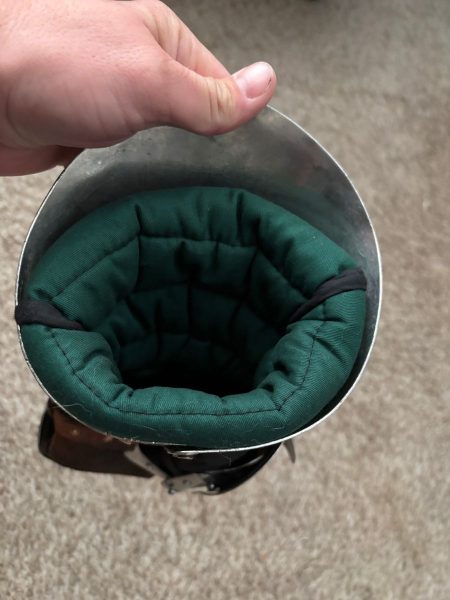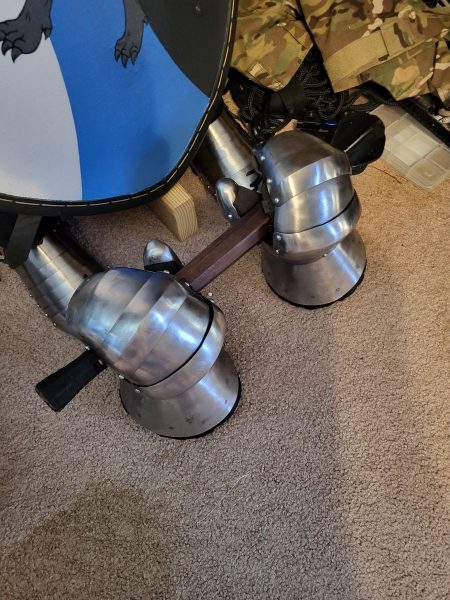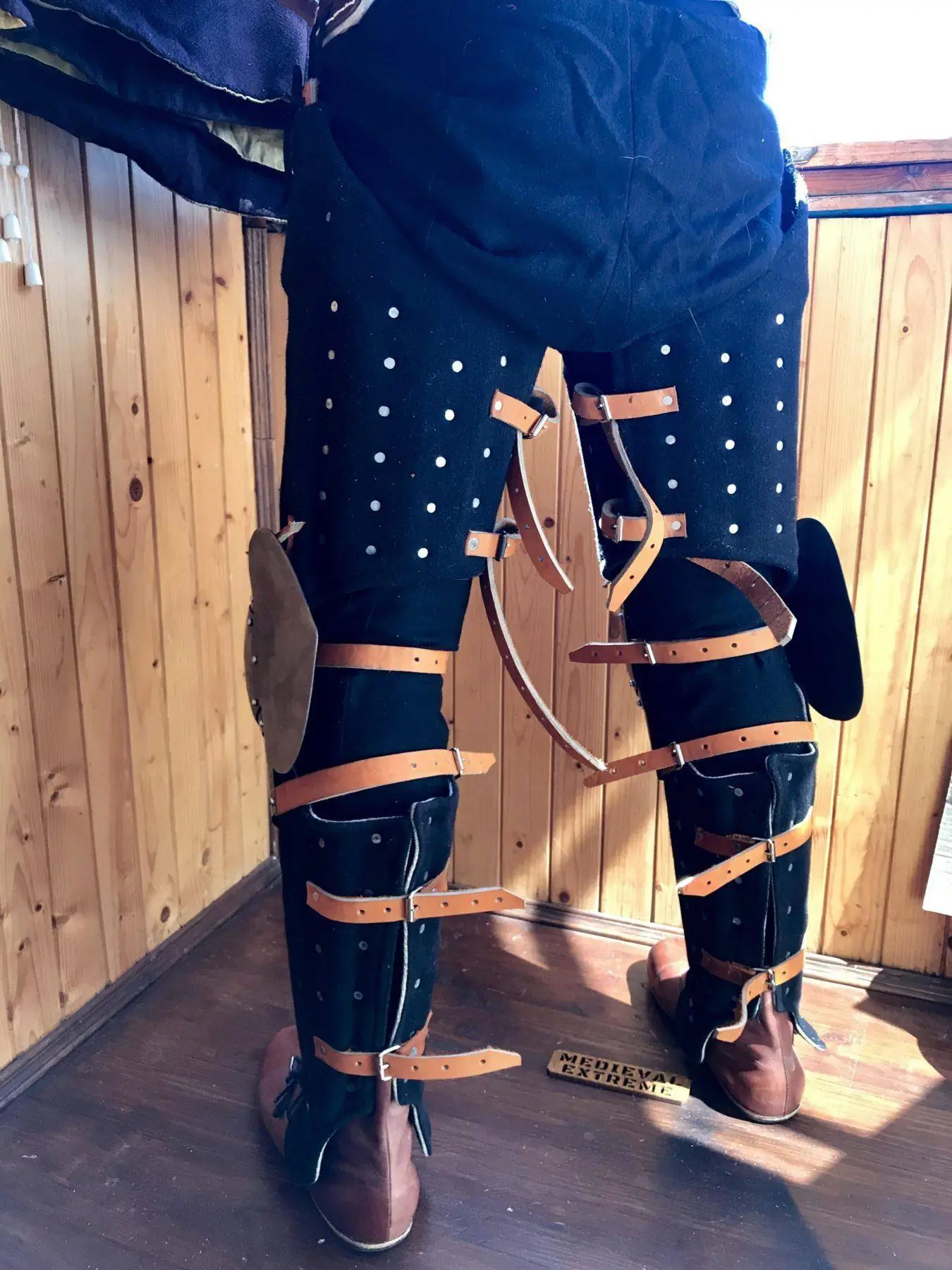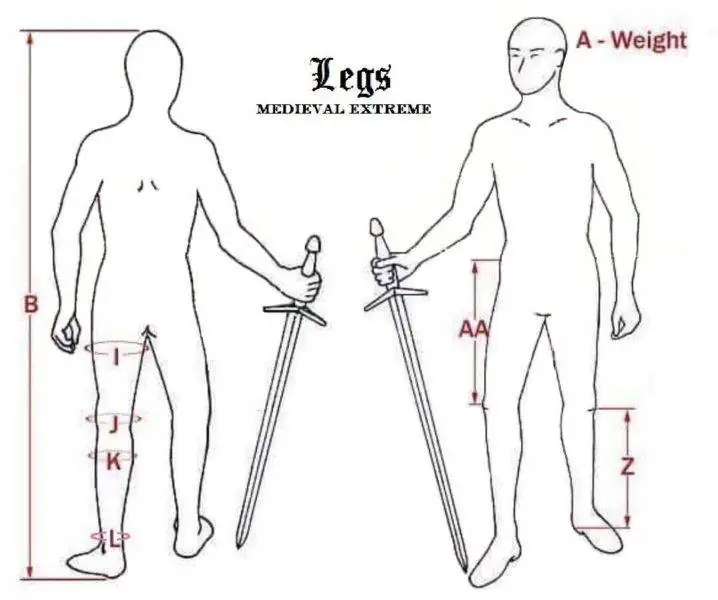Description
The Brigande armor set for legs are Universal model that is well suited for both single battles and buhurts. The brigande greaves and hips are made of many long plates that lie one upon the other and are attached to the fabric base. Such a construction gives very good mobility and protection to the greaves – it will suit your leg and cover it from all sides, and the overlapping plates will allow them to better hold the punch.
This is especially useful in mass battles, with such armor it is convenient for you to run around the battlefield, and you stay protected from hitting the back of the thigh, or in the calf muscle. Each plate is painted black to protect the steel from rusting. The cloth base consists of two layers, fastened together – a lasting tarpaulin on the inside and wool on the outside. This makes it resistant and more durable. You can regulate the greaves and hips with leather straps around the leg.
Segment Poleyn, made of tempered steel. The main advantage of the model is that the poleyn has two plates at the top and bottom. They are fastened with rivets, due to which they are mobile and do not hinder you from running. These plates will close the gap in your armor between the knee and shin during the run, or when you sit down in combat, and an increased petal protects your knee from side hits. The poleyn is fastened with two straps around the knee and does not slip down during the fight. They are comfortable and protect well.
The set consists of the following:
- Brigande greaves and hips
- Segment poleyn
Brigande armor set for legs is efficient to use – it simply folds, is comfortable to use, and is easy to transport. And last but not least, this is a small price for this armor. If you need high-quality armor, but you do not want to spend a lot of money, then this option will suit you.









































Whas missing the leather add-ons but was made very well
Fits nice and snug thanks to the adjustable straps! Edges were also rounded slightly to help reduce discomfort!
Gauntlet mits were very well made thin in palms to allow weapon grip and nice padding on top for good shock absorption.
Excellent quality as always. I keep coming back to M.E. due to their phenomenal consistency in making high quality gear.